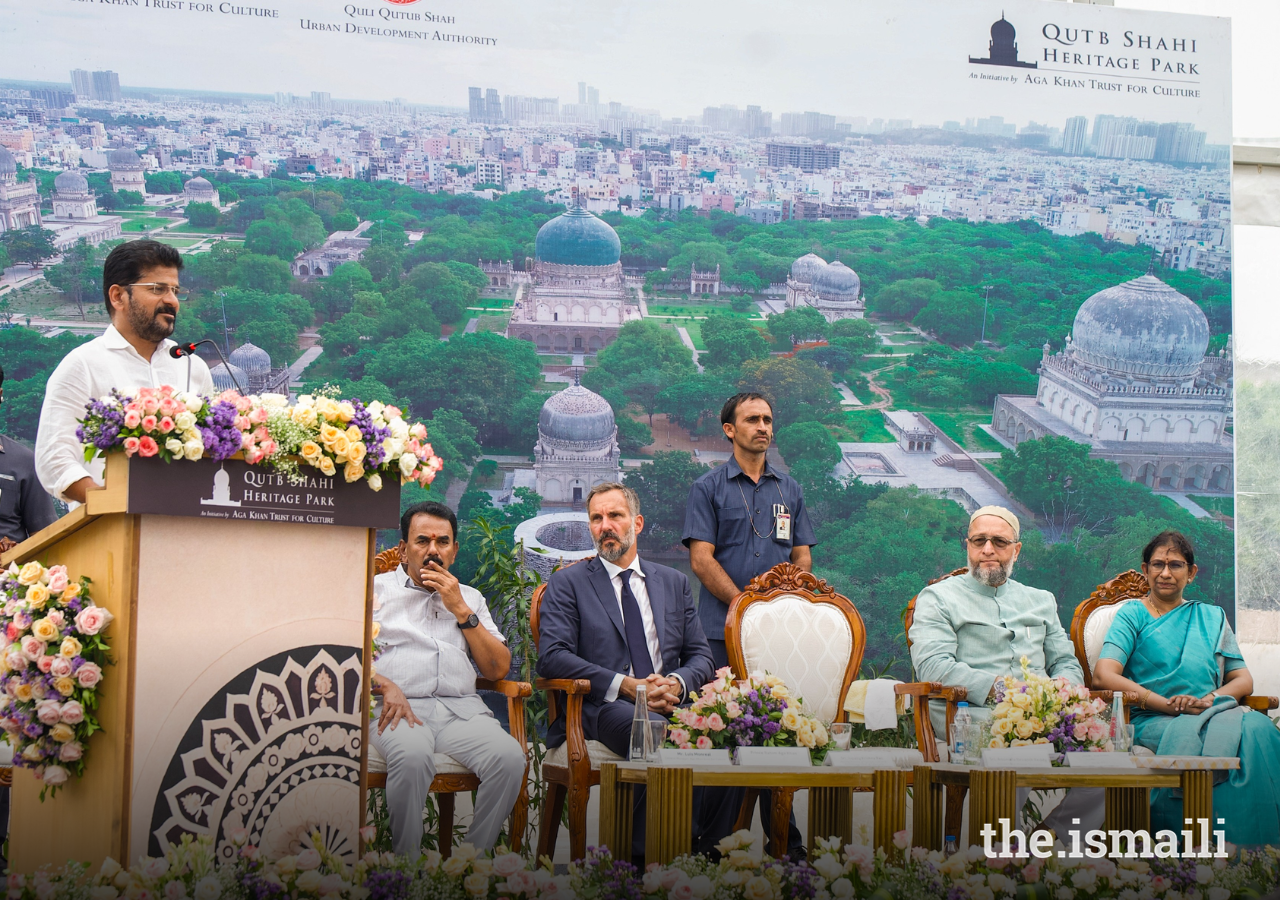Situated at the foot of the majestic Golconda Fort in Hyderabad, Telangana, the 106-acre park commemorates the Qutb Shahis, a Persianate Shia Islamic dynasty which ruled parts of southern India for 169 years during the 16th and 17th centuries. The necropolis is home to 40 mausoleums, 23 funerary mosques, 6 step-wells, a hammam, pavilions, and garden structures, making is one of the most significant ensembles in India
The Aga Khan Trust for Culture (AKTC) in partnership with the Department of Heritage of the Government of Telangana has successfully restored each of the historical structures within the necropolis, with the support of the Tata Trusts, US Ambassadors Fund for Cultural Preservation, IndiGo Reach/InterGlobe Foundation, and the Consulate of the Federal Republic of Germany, Chennai.
Once a testament to the grandeur of the Qutb Shahi dynasty—contemporaries to the Mughals and renowned patrons of Persianate culture—the park had fallen into a state of disrepair over the years, with some monuments even on the brink of collapse.
But through meticulous conservation and restoration efforts, the park’s architectural marvels have been brought back to their former glory. The restoration project aimed not only to revive the authenticity of form, design, and material but also ensure the structural stability of the monuments for generations to come.
“We not only recognise the art, architecture and engineering prowess inscribed in the history of this city, but also address future environmental and climate challenges which are not just cultural or scientific, but concerns of primary urgency,” said Prince Rahim at a ceremony today to mark the completion of the restoration work. Prince Aly Muhammad was also present at the event.
Under the guidance of renowned landscape architect the late Professor Mohammad Shaheer, a comprehensive master plan was devised in 2012 to integrate the Deccan Park and the archaeological zone into a single expansive Heritage Park, featuring pavilions, gardens, stepwells and mausolea. A network of pathways provide easy access to all the monuments, while grading of the earth ensures proper rainwater collection in the six stepwells located throughout the site.
“The Quli Qutb Shahi Heritage Park and its seven tombs stand as a proof of architectural brilliance and cultural richness of the Quli Qutb Shahi dynasty,” said Sri Anumula Revanth Reddy, Chief Minister of Telangana at the ceremony.
“Starting with the MOU in 2013, the conservation of more than 100 monuments spread over 106 acres represents the largest ever conservation effort undertaken in India.”
Learning from AKTC’s experience of conserving the Humayun’s Mausoleum World Heritage Site in Delhi, a similar craft-based approach was envisaged for the monuments standing within the Qutb Shahi Heritage Park. Since 2013, stone carvers have worked with granite blocks, masons repaired and rebuilt damaged walls, glazed tile makers restored tiles, and coppersmiths repaired and crafted finials, clocking millions of days of work to proudly and carefully match the work of their forefathers from centuries ago.
“The fruitful experience acquired here with the completion of the Qutb Shahi Heritage Park encourages us to look to the future with optimism,” said Luis Monreal, General Manager of AKTC.
The Heritage Park is a testament to Hyderabad's rich history and a symbol of successful collaboration between several public and private organisations along with the local community, reminding us how important it is to preserve cultural heritage for future generations.












